Abstract
1. The third cerebral ventricle of cats treated with nialamide and anaesthetized with chloralose was perfused, and the effluent was tested for 5-hydroxytryptamine (5-HT) and also for acetylcholine (ACh) when the perfusion fluid contained neostigmine.
2. Under `resting' conditions a 25 min sample of effluent contained from < 1 to 6 ng 5-HT; the release remained steady during many hours of perfusion. It was necessary to watch out for traces of blood which might contribute to the 5-HT content and which were only visible after centrifugation.
3. A number of regions in the ventral mid-brain and hind-brain were stimulated, including the two most anterior nuclei of the raphe, nucleus linearis rostralis and intermedius. Release of 5-HT (rarely more than 2 ng) was only obtained on stimulation of these two nuclei, whereas ACh was released by stimulating many points, such as the reticular formation or the decussation of the superior cerebellar peduncles, but not the two raphe nuclei.
4. Low frequencies of stimulation were more effective at releasing 5-HT, and high frequencies at releasing ACh.
5. Since the amount of 5-HT released on stimulation was rarely more than 2 ng, a powerful re-uptake process was suspected and confirmed by the use of chlorimipramine. Intravenous, intraperitoneal and intraventricular use of this drug temporarily increased the basal release to values ranging from 20 to 50 ng in 25 min samples, and about trebled the release on stimulation of either of the linear nuclei.
6. Intravenous administration of chlorimipramine (10 mg/kg) caused the disappearance of electrical responses evoked in the brain stem by afferent sensory stimuli.
Full text
PDF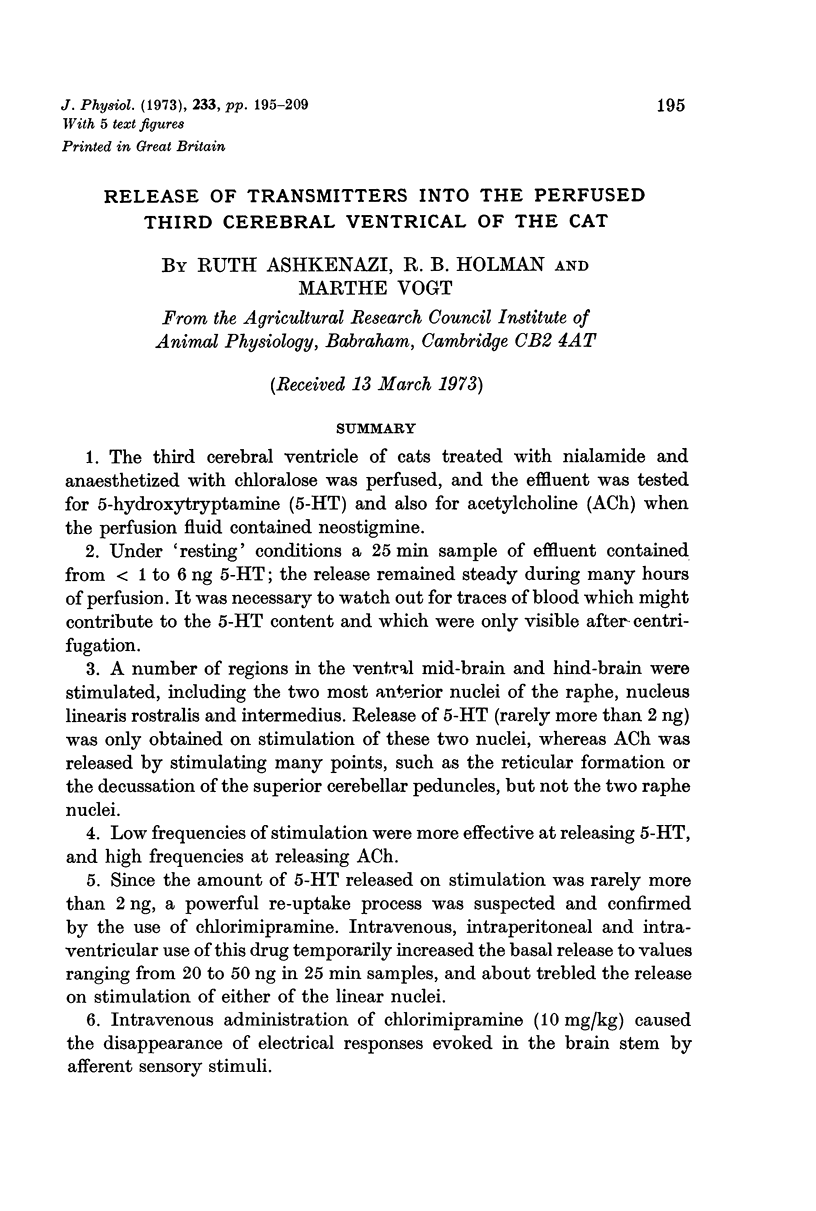
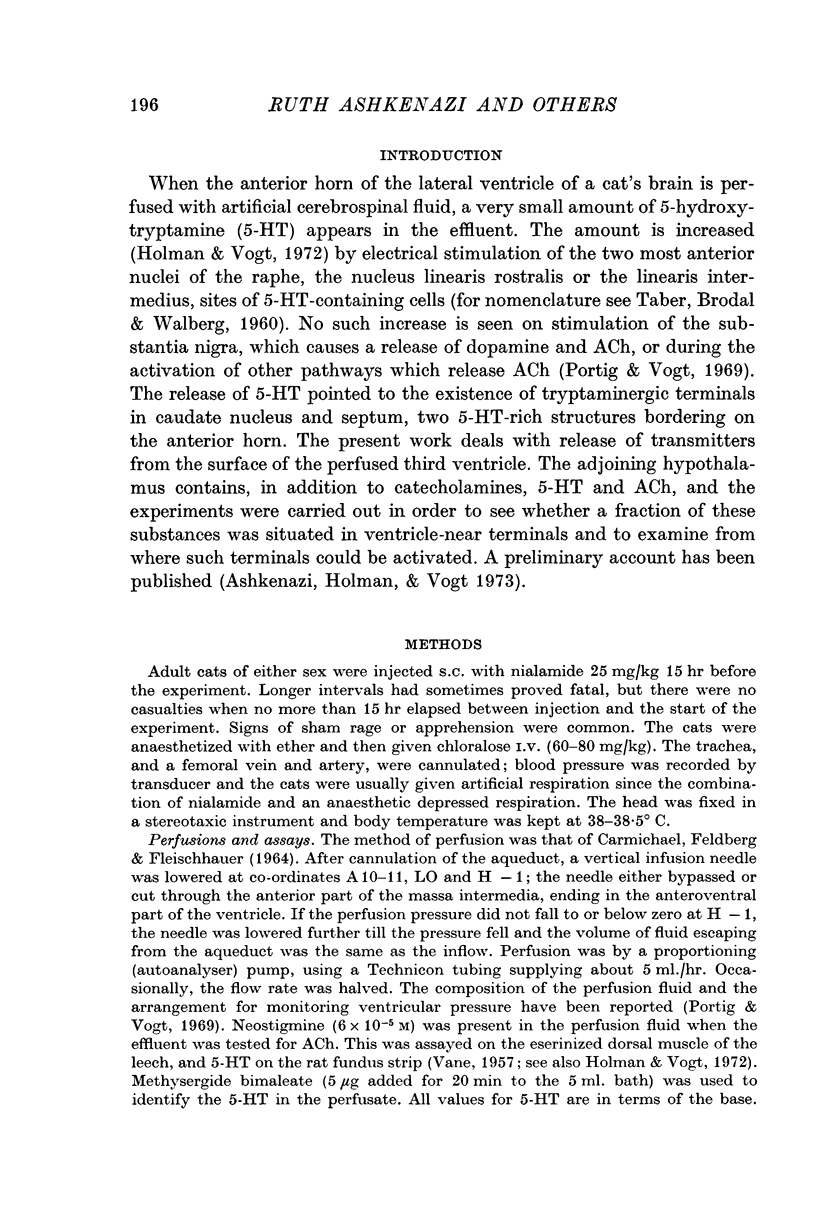
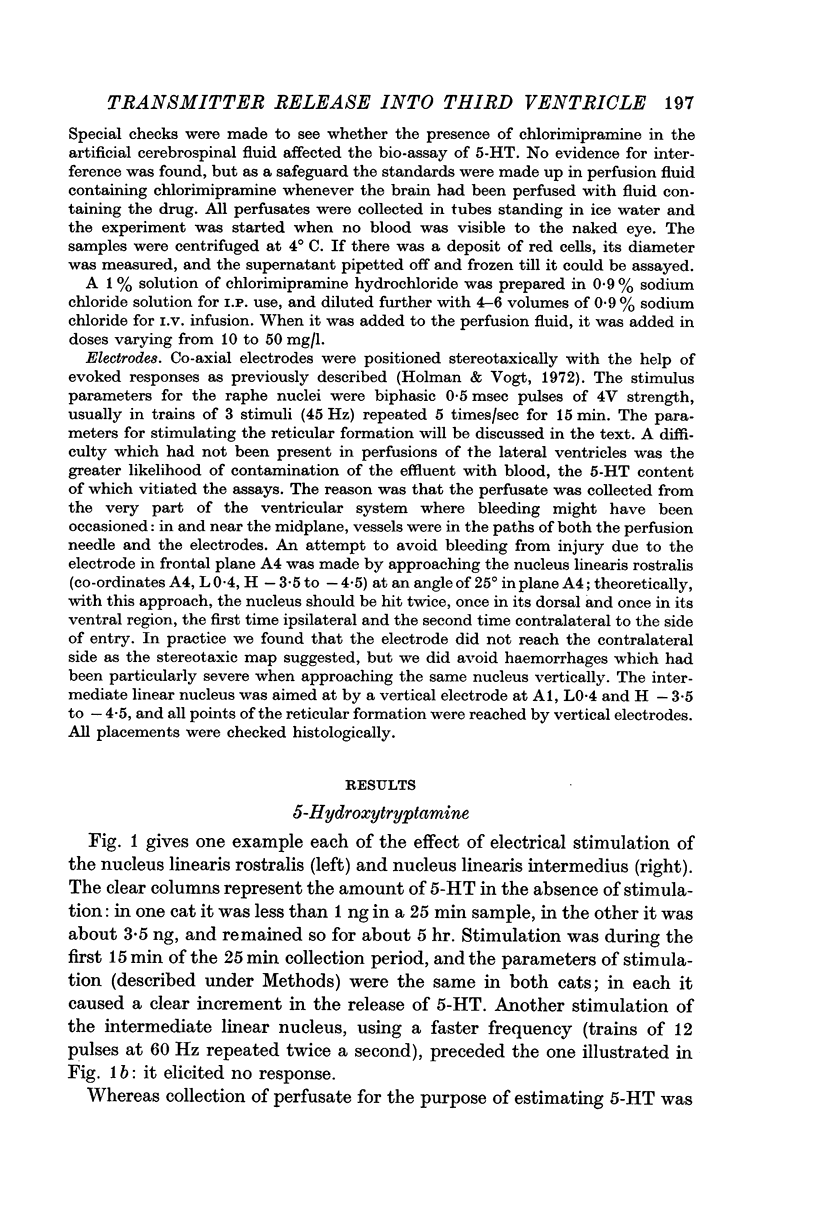
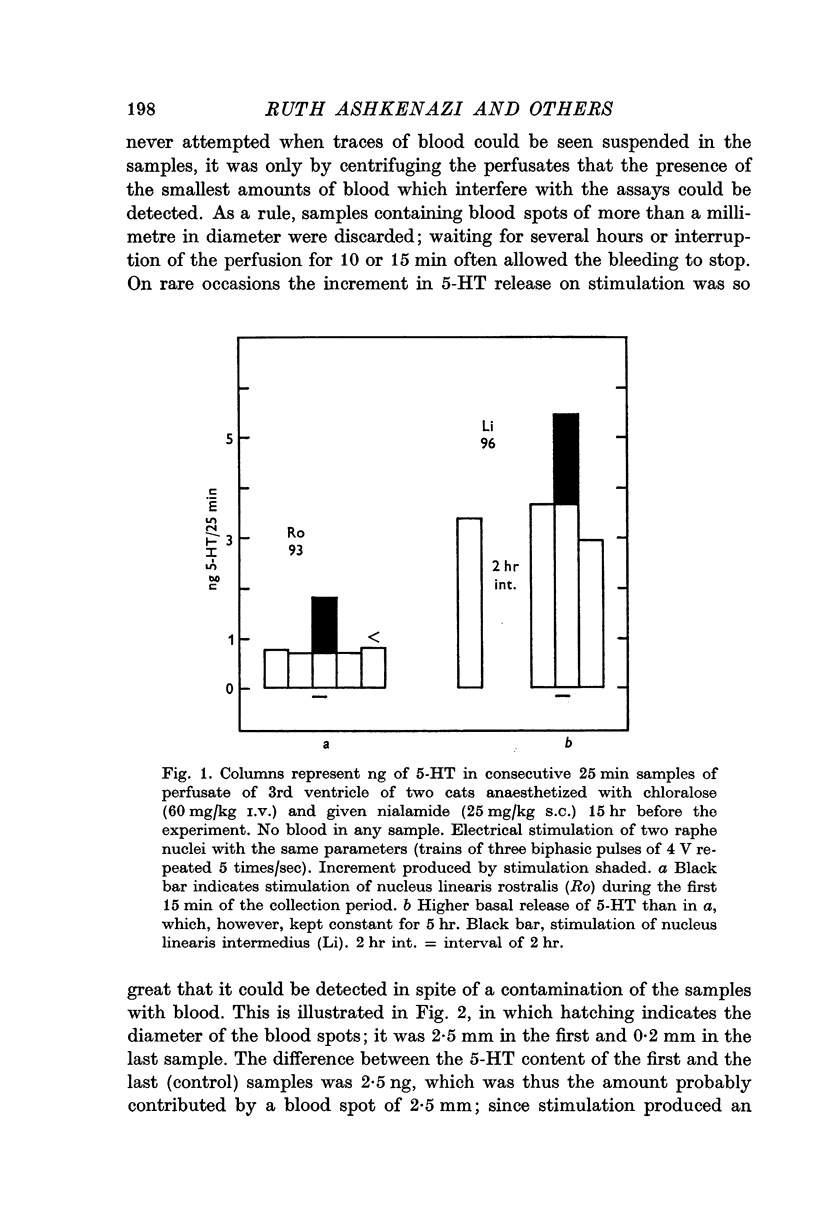
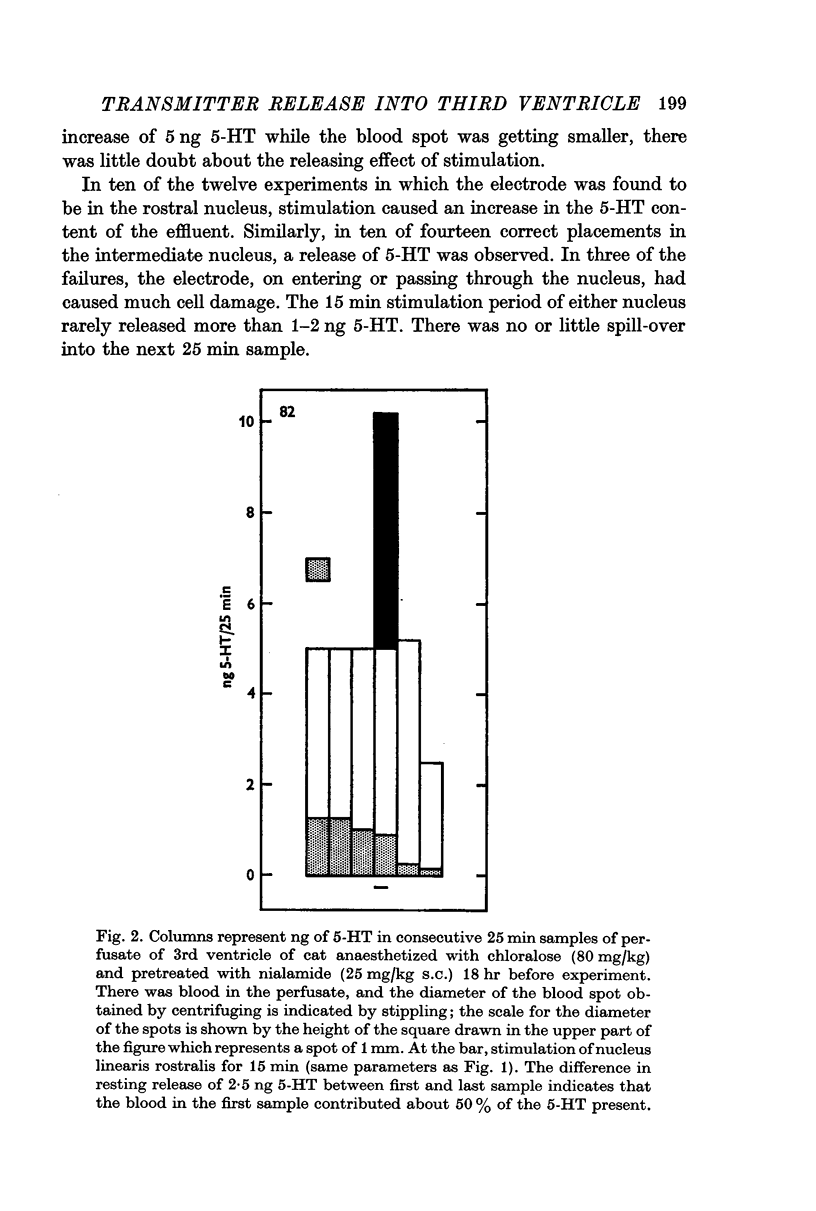
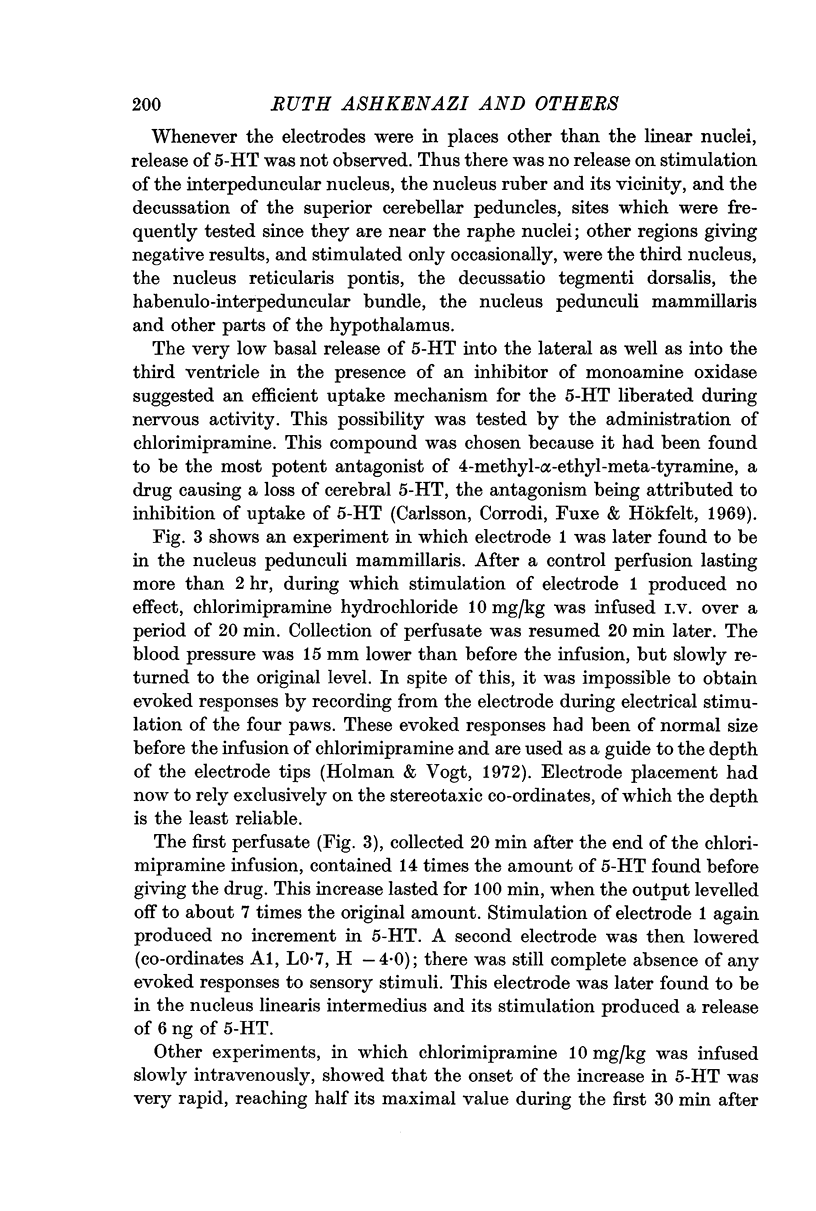
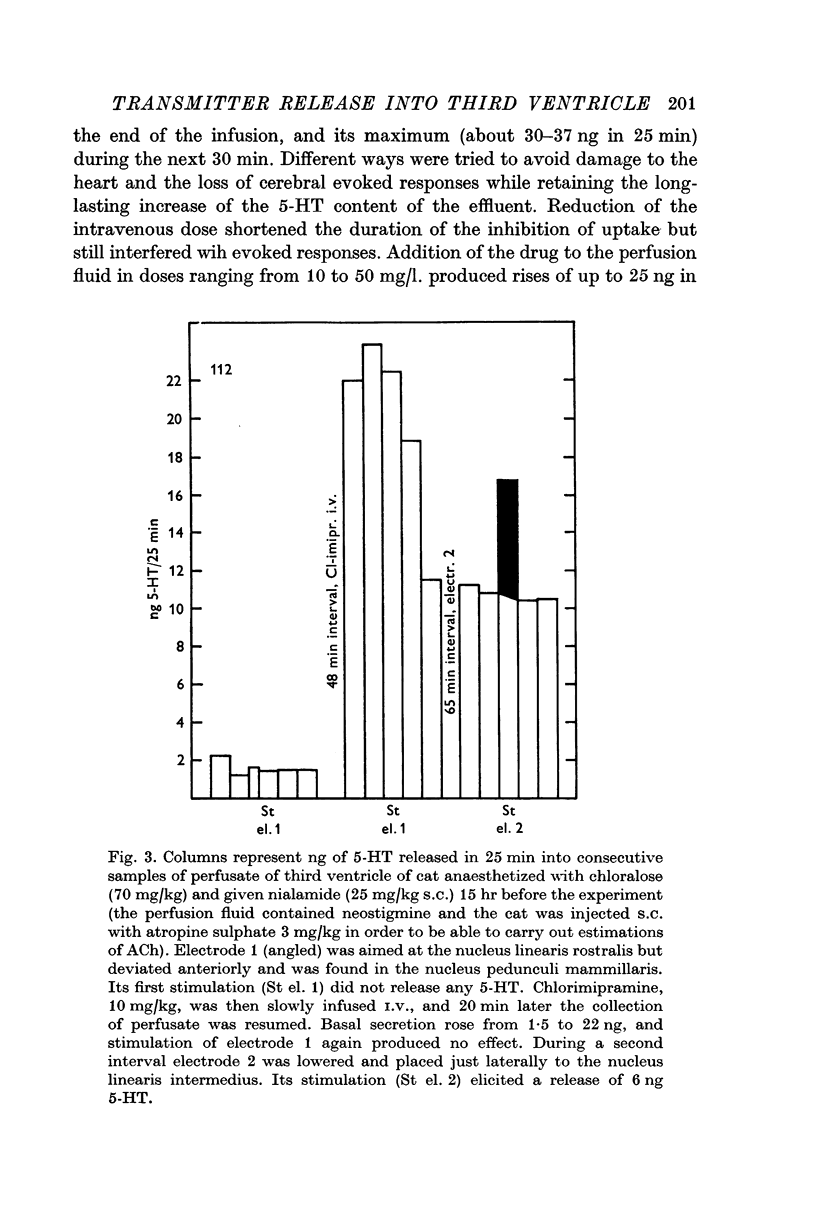
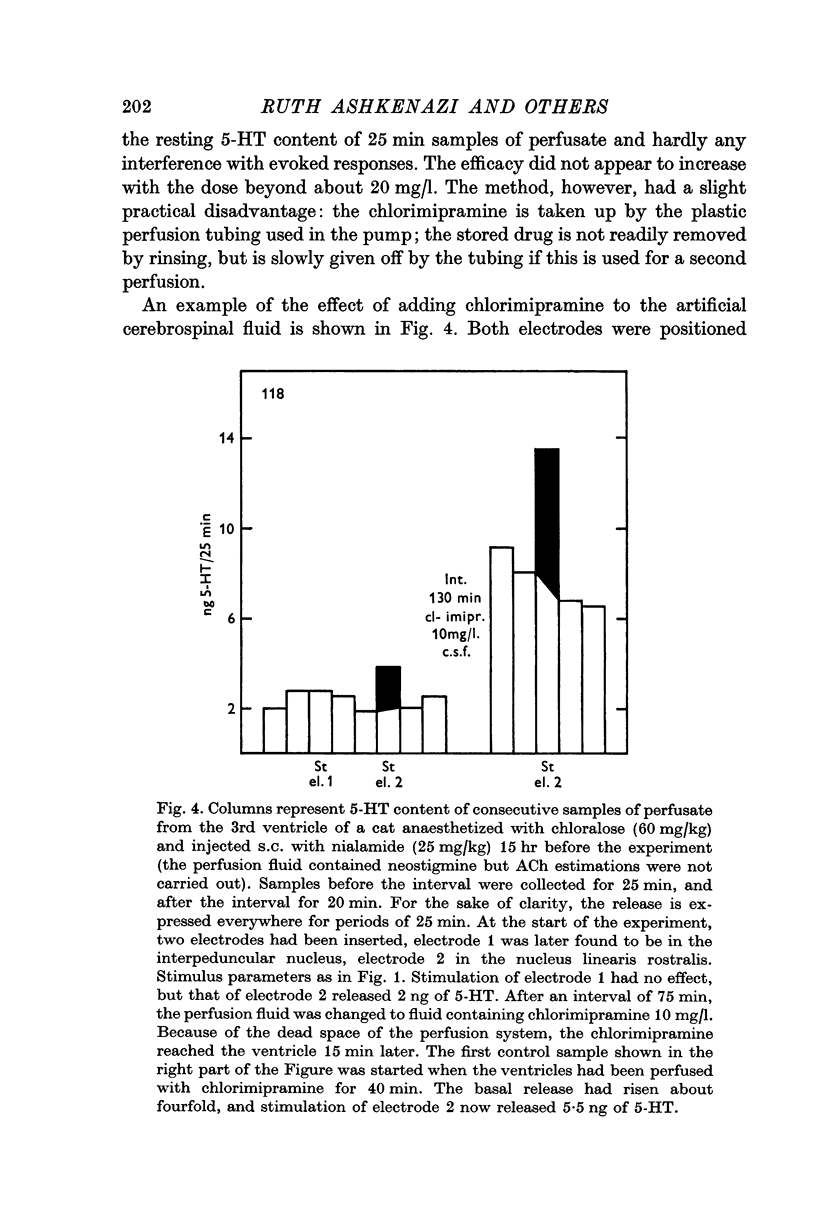
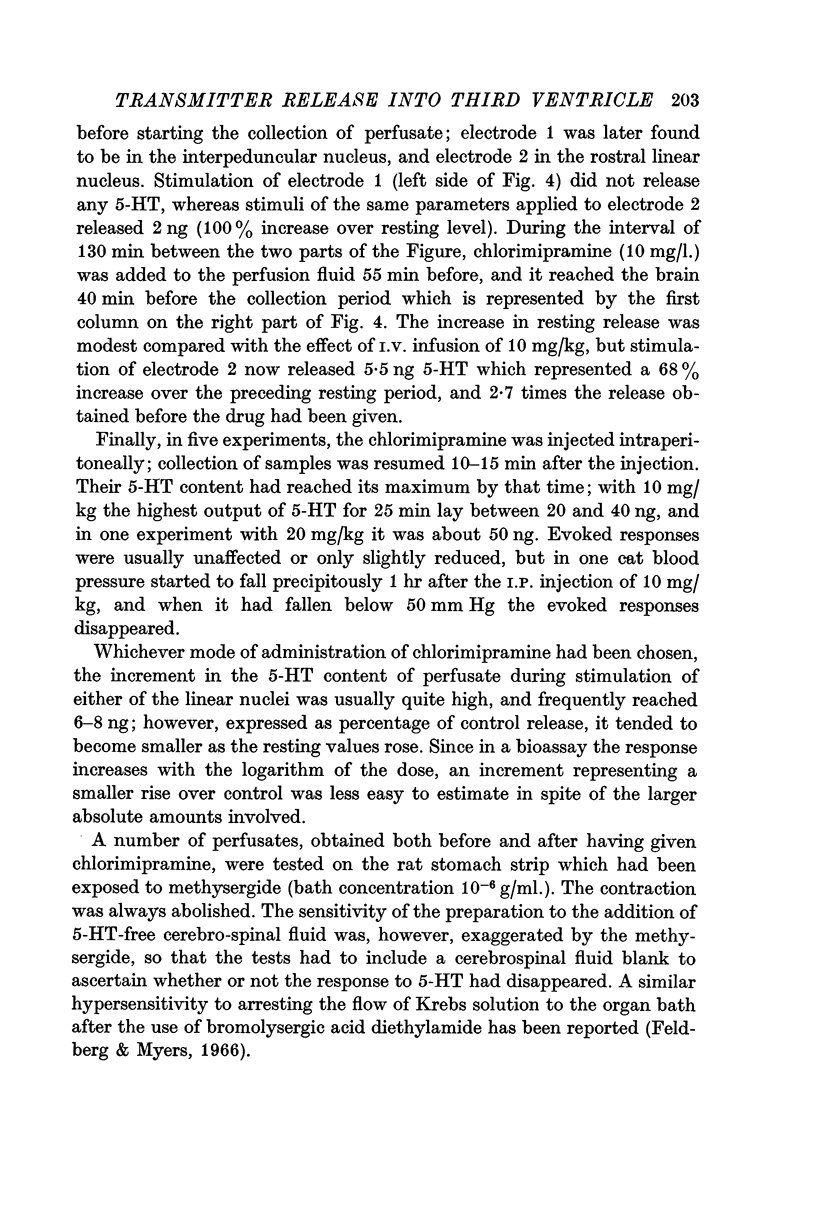
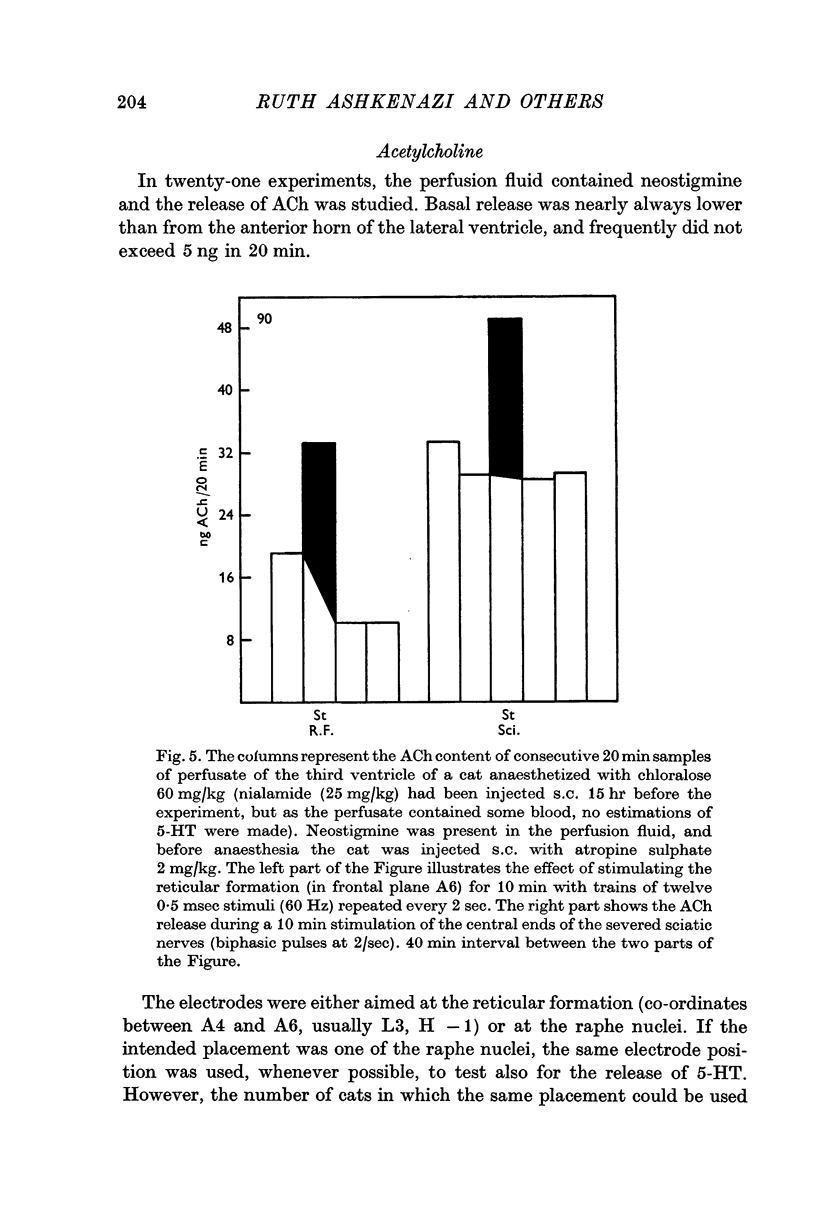
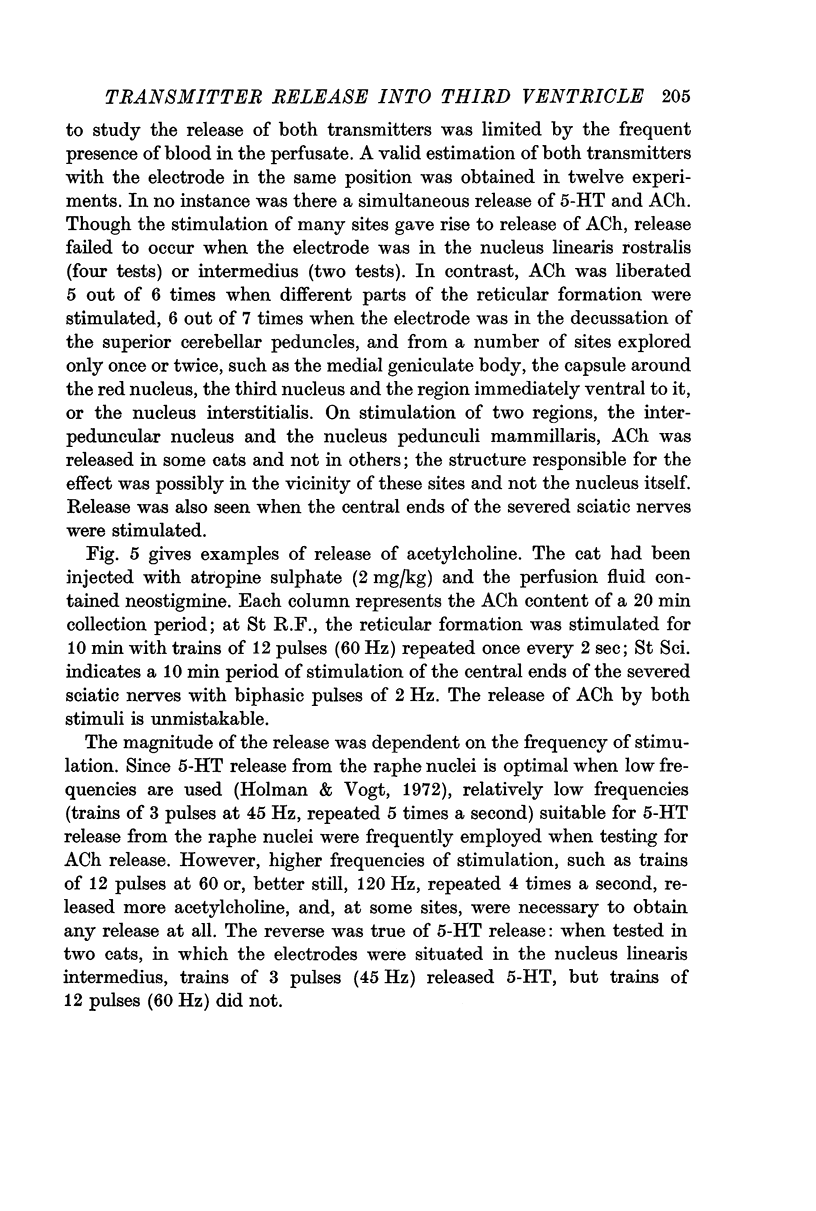
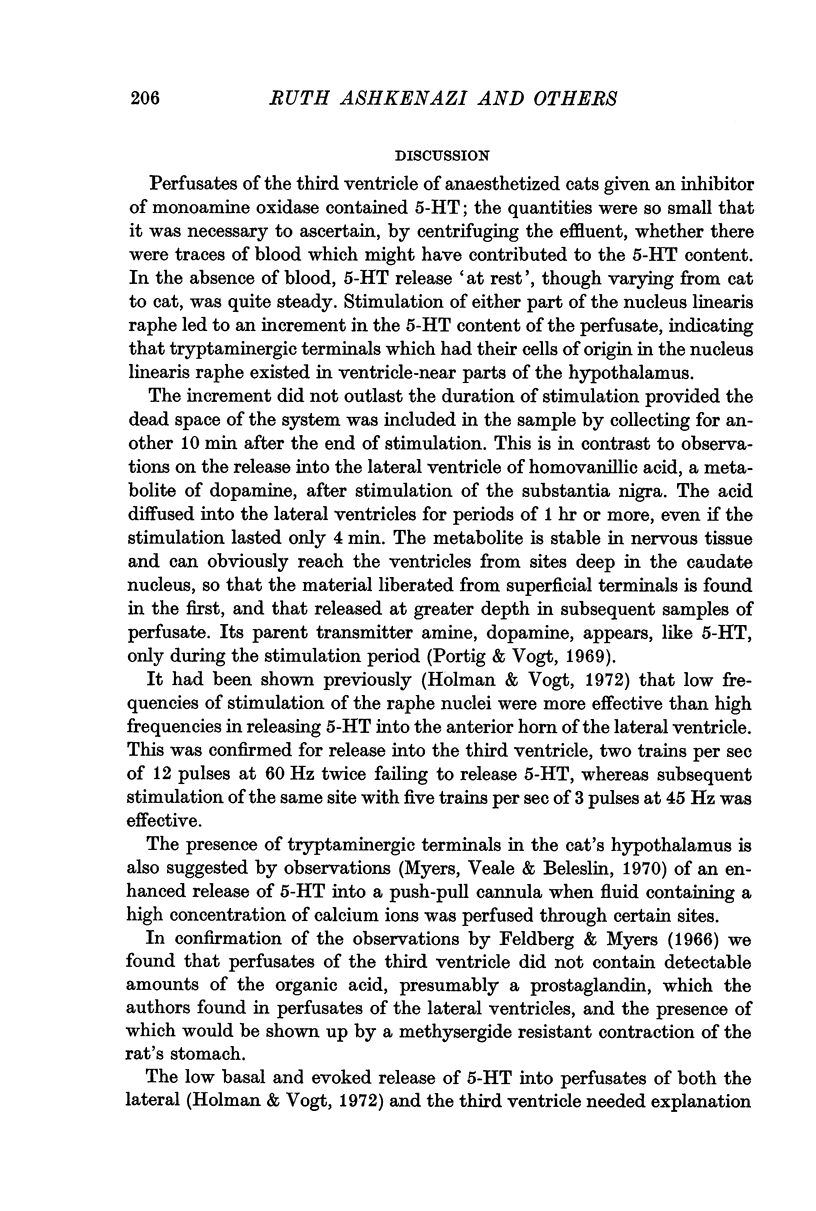
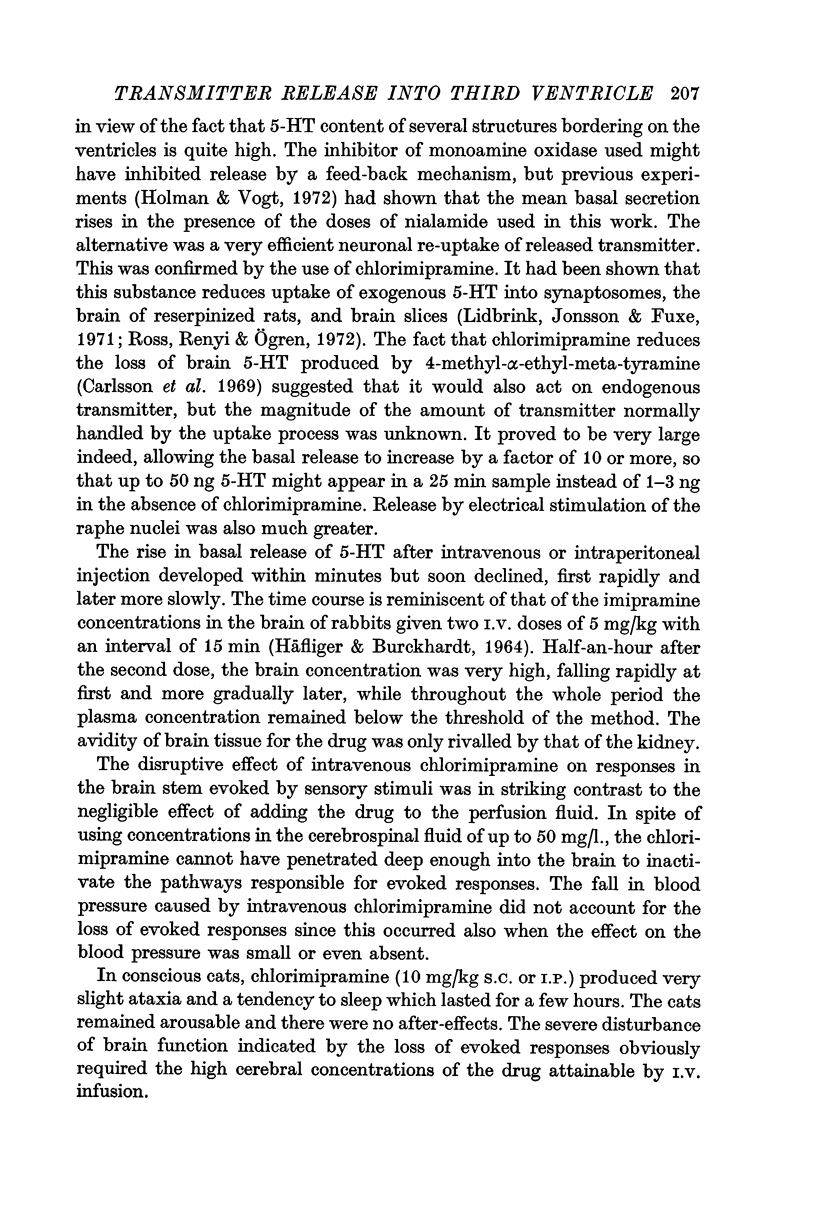
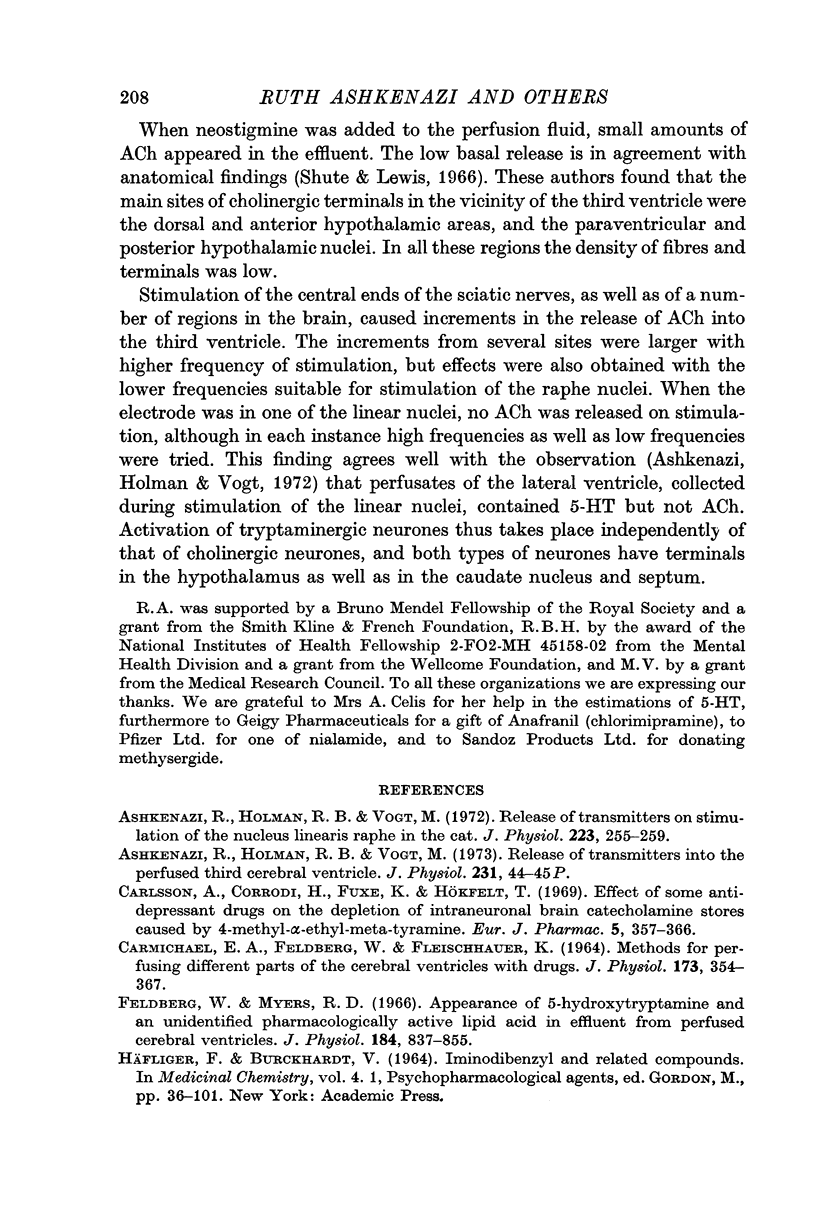
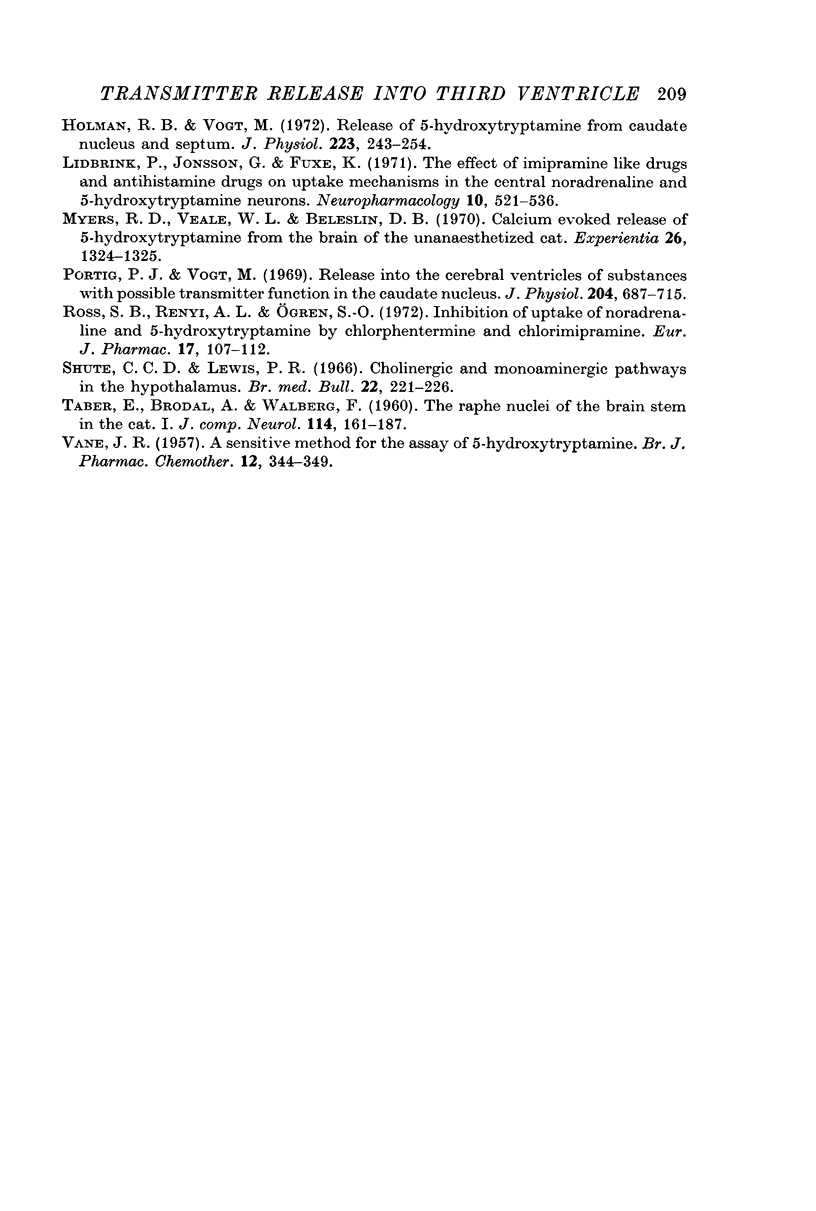
Selected References
These references are in PubMed. This may not be the complete list of references from this article.
- Ashkenazi R., Holman R. B., Vogt M. Release of transmitters into the perfused third cerebral ventricle. J Physiol. 1973 May;231(1):44P–45P. [PubMed] [Google Scholar]
- Ashkenazi R., Holman R. B., Vogt M. Release of transmitters on stimulation of the nucleus linearis raphe in the cat. J Physiol. 1972 May;223(1):255–259. doi: 10.1113/jphysiol.1972.sp009845. [DOI] [PMC free article] [PubMed] [Google Scholar]
- CARMICHAEL E. A., FELDBERG W., FLEISCHHAUER K. METHODS FOR PERFUSING DIFFERENT PARTS OF THE CAT'S CEREBRAL VENTRICLES WITH DRUGS. J Physiol. 1964 Oct;173:354–367. doi: 10.1113/jphysiol.1964.sp007461. [DOI] [PMC free article] [PubMed] [Google Scholar]
- Carlsson A., Corrodi H., Fuxe K., Hökfelt T. Effect of antidepressant drugs on the depletion of intraneuronal brain 5-hydroxytryptamine stores caused by 4-methyl-alpha-ethyl-meta-tyramine. Eur J Pharmacol. 1969 Mar;5(4):357–366. doi: 10.1016/0014-2999(69)90113-7. [DOI] [PubMed] [Google Scholar]
- Feldberg W., Myers R. D. Appearance of 5-hydroxytryptamine and an unidentified pharmacologically active lipid acid in effluent from perfused cerebral ventricles. J Physiol. 1966 Jun;184(4):837–855. doi: 10.1113/jphysiol.1966.sp007951. [DOI] [PMC free article] [PubMed] [Google Scholar]
- Holman R. B., Vogt M. Release of 5-hydroxytryptamine from caudate nucleus and septum. J Physiol. 1972 May;223(1):243–254. doi: 10.1113/jphysiol.1972.sp009844. [DOI] [PMC free article] [PubMed] [Google Scholar]
- Lidbrink P., Jonsson G., Fuxe K. The effect of imipramine-like drugs and antihistamine drugs on uptake mechanisms in the central noradrenaline and 5-hydroxytryptamine neurons. Neuropharmacology. 1971 Sep;10(5):521–536. doi: 10.1016/0028-3908(71)90018-9. [DOI] [PubMed] [Google Scholar]
- Myers R. D., Veale W. L., Beleslin D. B. Calcium evoked release of 5-hydroxytryptamine from the brain of the unanesthetized cat. Experientia. 1970 Dec 15;26(12):1324–1325. doi: 10.1007/BF02113006. [DOI] [PubMed] [Google Scholar]
- Portig P. J., Vogt M. Release to the cerebral ventricles of substances with possible transmitter function in the caudate nucleus. J Physiol. 1969 Oct;204(3):687–715. doi: 10.1113/jphysiol.1969.sp008939. [DOI] [PMC free article] [PubMed] [Google Scholar]
- Ross S. B., Renyi A. L., Ogren S. O. Inhibition of the uptake of noradrenaline and 5-hydroxytryptamine by chlorphentermine and chlorimipramine. Eur J Pharmacol. 1972 Jan;17(1):107–112. doi: 10.1016/0014-2999(72)90276-2. [DOI] [PubMed] [Google Scholar]
- Shute C. C., Lewis P. R. Cholinergic and monoaminergic pathways in the hypothalamus. Br Med Bull. 1966 Sep;22(3):221–226. doi: 10.1093/oxfordjournals.bmb.a070477. [DOI] [PubMed] [Google Scholar]
- TABER E., BRODAL A., WALBERG F. The raphe nuclei of the brain stem in the cat. I. Normal topography and cytoarchitecture and general discussion. J Comp Neurol. 1960 Apr;114:161–187. doi: 10.1002/cne.901140205. [DOI] [PubMed] [Google Scholar]
- VANE J. R. A sensitive method for the assay of 5-hydroxytryptamine. Br J Pharmacol Chemother. 1957 Sep;12(3):344–349. doi: 10.1111/j.1476-5381.1957.tb00146.x. [DOI] [PMC free article] [PubMed] [Google Scholar]


